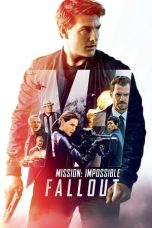- Source: Mission school
- Source: Mission School
A mission school or missionary school is a religious school originally developed and run by Christian missionaries. The mission school was commonly used in the colonial era for the purposes of Westernization of local people. These may be day schools or residential schools (as in the Canadian Indian residential school system).
Mission schools were established in India as early as the 16th century. They eventually appeared on almost every continent, and persisted in some regions to the late 20th century.
These schools often adopted an evangelical and "heavily denominational" approach to religious education, with the intention of producing new teachers and religious leaders to propagate Christianity among the local population. They also provided academic and vocational training, and usually discouraged the traditional practices of the local people. Mission schools were sometimes government-funded, for example in the US "when Congress felt less inclined to provide the large sums of money needed to establish government schools" to educate the American Indian population.
See also
List of missionary schools in Malaysia
References
The Mission School (sometimes called "New Folk" or "Urban Rustic") is an art movement of the 1990s and 2000s, centered in the Mission District, San Francisco, California.
History and characteristics
This movement is generally considered to have emerged in the early 1990s around a core group of artists who attended (or were associated with) San Francisco Art Institute. The term "Mission School", however, was not coined until 2002, in a San Francisco Bay Guardian article by Glen Helfand.
The Mission School is closely aligned with the larger lowbrow art movement, and can be considered to be a regional expression of that movement. Artists of the Mission School take their inspiration from the urban, bohemian, "street" culture of the Mission District and are strongly influenced by mural and graffiti art, comic and cartoon art, and folk art forms such as sign painting and hobo art. These artists are also noted for use of non-traditional artistic materials, such as house paint, spray paint, correction fluid, ballpoint pens, scrapboard, and found objects. Gallery work by these artists is often displayed using the "cluster method", in which a number of individual works (sometimes by different artists) are clustered closely together on a gallery wall, rather than the traditional gallery display method of widely separating individual works.
Street art has always been an important part of the Mission School aesthetic. Several Mission School artists crossed over into San Francisco's burgeoning graffiti art scene of the 1990s, notably Barry McGee (who wrote under the name "Twist"), Ruby Neri (a.k.a. "Reminisce"), Dan "Plasma" Rauch, and Margaret Kilgallen (a.k.a. "Meta").
Artists
Artists considered to be part of the Mission School (past or present) have included:
Barry McGee
Margaret Kilgallen
Chris Johanson
Alicia McCarthy
Ruby Neri
Rigo 23
Clare Rojas
Thomas Campbell
Scott Williams
Bill Daniel
The profiles of these artists were raised by the inclusion of the work of Barry McGee in the 2001 Venice Biennale and the works of Chris Johanson and Margaret Kilgallen in the 2002 Whitney Biennial.
New Mission School
In 2003, not long after the term "Mission School" was coined, a panel at the Commonwealth Club of California named several emerging San Francisco artists as constituting a "New Mission School". These artists included Andrew Schoultz, Dave Warnke, Sirron Norris, Neonski, Ricardo, Damon Soule, Misk, and NoMe, though many of these artists do not embrace the "Mission School" label.
Criticism
The term Mission School has been criticized for being too geographically specific (many artists outside of San Francisco share this aesthetic, while others living in the Mission District do not), while at the same time being a vague catch-all, with many artists who are referred to as Mission School having a hard time seeing how they are part of this "school".
Galleries and other venues
Galleries, museums, and sites closely associated with the Mission School include:
Adobe Books
Southern Exposure Gallery
New Langton Arts
Yerba Buena Center for the Arts
Deitch Projects
Luggage Store Gallery
Jack Hanley Gallery
References
Further reading
Buchner, Clark. 2006. "Profit-free zone". Art Review 4(5):92–95.
Drescher, Timothy W. 1998. "Street subversion: the political geography of murals and graffiti". In: Brook J, Carlsson C, Peters NJ (eds). Reclaiming San Francisco: History, Politics, Culture: A City Lights Anthology. ISBN 0-87286-335-2
Rinder, Lawrence. 2005. "Learning at the Mission School". Parkett 74:186–190.
Bay Area Now: A Regional Survey of Contemporary Art, Yerba Buena Center for the Arts, 1997.
External links
"ENERGY THAT IS ALL AROUND" exhibition, San Francisco Art Institute
"Spray Can Writers Erupt" by Timothy W Drescher, Shaping San Francisco Digital Library.
Bonetti, David. "The young at art", San Francisco Examiner, June 18, 1997.
Smith, Roberta. "Art in Review: 'Widely Unknown'", The New York Times, December 14, 2001.
Drescher, Timothy W. "Clarion Alley and Post-modernism", Shaping San Francisco Digital Library.
Rapoport, Lynn. "Wall space: The Clarion Alley Mural Project uses public art to paint a home", San Francisco Bay Guardian, October 23, 2002.
Pollack, Barbara. "The New Visionaries", ARTnews, December 2003.
Chennault, Sam. "Graffiti to Gallery", SF Weekly, September 1, 2004.
transit gallery - gallery of Mission street art
Fecal Face Dot Com – Bay Area arts website focusing on the current generation of Mission School artists
Kata Kunci Pencarian:
- Church Mission School
- Hollandsch-Inlandsche School
- Gereja Mission Batak
- Elon Musk
- Otto Christian Dahl
- Mwai Kibaki
- Malaysia
- Shin Hye-sun
- Pinamalayan, Mindoro Timur
- Tanza
- Mission school
- Mission School
- Mission Style
- Shawnee Mission USD 512
- Sitamarhi
- Saint Joseph's Mission (Williams Lake)
- American Indian boarding schools
- Vivekananda Mission School
- Swami and Friends
- Tanza
Mission: Impossible – Ghost Protocol (2011)
My Hero Academia: World Heroes’ Mission (2021)
School of Youth: The Corruption of Morals (2014)
No More Posts Available.
No more pages to load.














